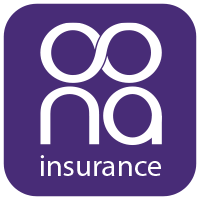A well-maintained motorcycle is a safer motorcycle. Perform regular checks on:
- Tire pressure and tread depth to ensure proper grip.
- Brakes and fluid levels to guarantee responsive stopping power.
- Chain tension and lubrication for smooth performance.
- Lights and signals for visibility, especially at night.
Regular maintenance not only prolongs the life of your motorcycle but also prevents potential mechanical failures that could lead to accidents.
Tip 4: Navigating Philippines' Weather Conditions
The Philippines' tropical climate can make riding conditions unpredictable. Here’s how to stay safe:
- Rainy Season (June to November): Roads become slippery, increasing the risk of skidding. Slow down, increase your following distance, and be cautious on painted road markings and metal surfaces, as they can be slick when wet.
- Hot Season (March to May): Stay hydrated and take regular breaks to avoid fatigue. Be cautious of heat mirages that can distort your perception of the road surface.
Tip 5: Understanding and Obeying Traffic Laws
Following traffic laws is essential for safety and helps prevent fines and penalties:
- Carry your licence, registration, and proof of insurance at all times.
- Adhere to speed limits, especially in crowded urban areas.
- Never ride under the influence of alcohol or drugs.
- Use designated motorcycle lanes and obey traffic signals.
Complying with the law not only protects you but also ensures the safety of others on the road.
Tip 6: Advanced Riding Skills for Philippine Roads
Enhance your riding experience with these advanced skills:
- Counter-Steering: Learn to lean into turns using counter-steering for better control on winding roads.
- Emergency Braking: Practise quick stops without locking your wheels. This skill can be life-saving in heavy traffic.
- Lane Positioning: Position yourself in the lane for maximum visibility and space to manoeuvre, especially when navigating congested streets.
Tip 7: Group Riding Etiquette
Group rides are common and enjoyable, but they require coordination and discipline. Follow these guidelines:
- Establish hand signals before setting off to communicate with the group.
- Maintain a staggered formation to give each rider enough space.
- Avoid showing off or engaging in risky behaviour.
- Support less experienced riders by riding at a comfortable pace for everyone.
Group riding can be fun, but safety should always be the priority.
Tip 8: The Importance of Motorcycle Insurance
While safety measures are crucial, accidents can still happen. That's where Oona Insurance comes in. Basic Compulsory Third Party Liability (CTPL) insurance is mandatory, but it offers minimal coverage. Consider upgrading to Oona Motorcycle Insurance for enhanced protection:
- Coverage for Accidents, Theft, and Natural Disasters: Protects your bike from a wide range of risks.
- Quick Claims Process: Get back on the road faster with hassle-free claims.
- 24/7 Customer Support: Assistance whenever you need it.
- Customizable Policies: Tailor your coverage based on your needs and budget.
Tip 9: Stay Alert and Avoid Distractions
Riding a motorcycle demands full attention and focus. Here’s how to maintain situational awareness:
- Avoid Using Mobile Phones: Even with hands-free devices, your focus can be compromised. Pull over if you need to make a call or send a message.
- Scan the Road Ahead: Constantly observe what’s happening 10-15 seconds ahead of you to anticipate potential hazards.
- Watch for Pedestrians and Animals: Be prepared for sudden movements, especially in rural areas.
Staying alert at all times reduces the risk of accidents caused by unexpected obstacles.
Tip 10: Know Your Limits and Ride Within Them
Understanding your skill level and the limits of your motorcycle is vital for safety:
- Don’t Push Beyond Your Comfort Zone: If you’re not confident riding at high speeds or tackling tricky terrains, slow down or find an alternative route.
- Practise New Skills in Safe Areas: Before trying advanced techniques like cornering or emergency braking on busy roads, practise them in a safe, open space.
- Avoid Riding When Fatigued: Fatigue can impair your reaction time and judgement. Take breaks during long rides and know when to call it a day.
Recognizing your limits and riding accordingly can prevent dangerous situations and keep you safer on the road.
Conclusion: Ride Smart, Ride Safe
Motorcycle safety is about preparation, awareness, and responsible riding. By following these 10 essential tips, you can significantly reduce your risk of accidents and ensure a more enjoyable experience on the road. Remember, safety starts with the right gear, continues with good riding habits, and is supported by comprehensive insurance from Oona Insurance Philippines.
Are you ready to secure your ride? Visit Oona Insurance Philippines for a personalised quote and ride with confidence knowing you’re fully protected.













